TIBET HOUSE MAJOR EVENTS
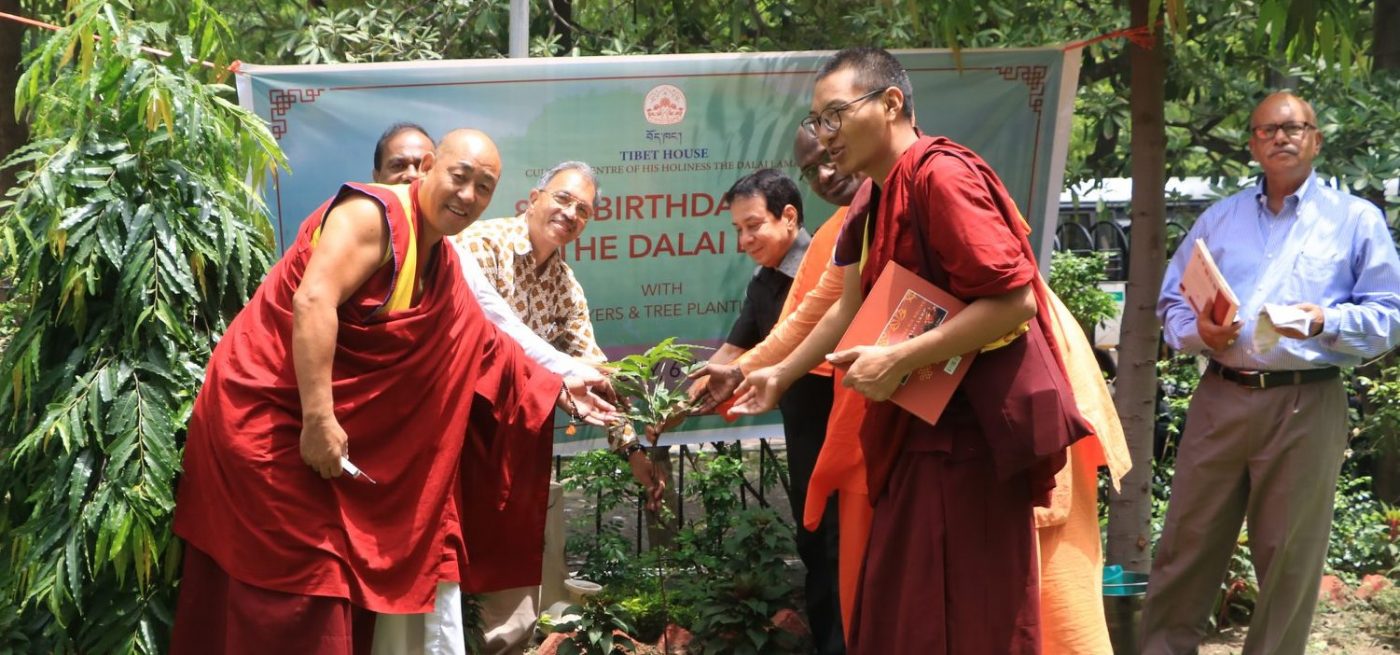
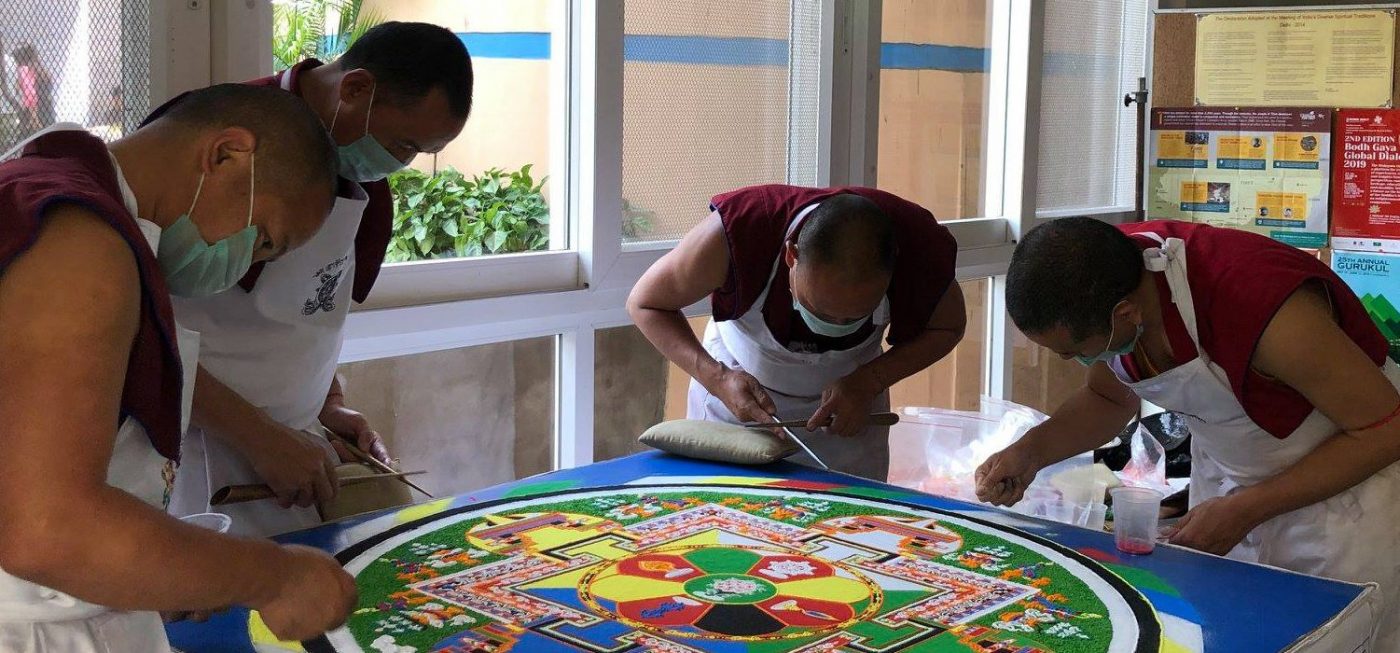
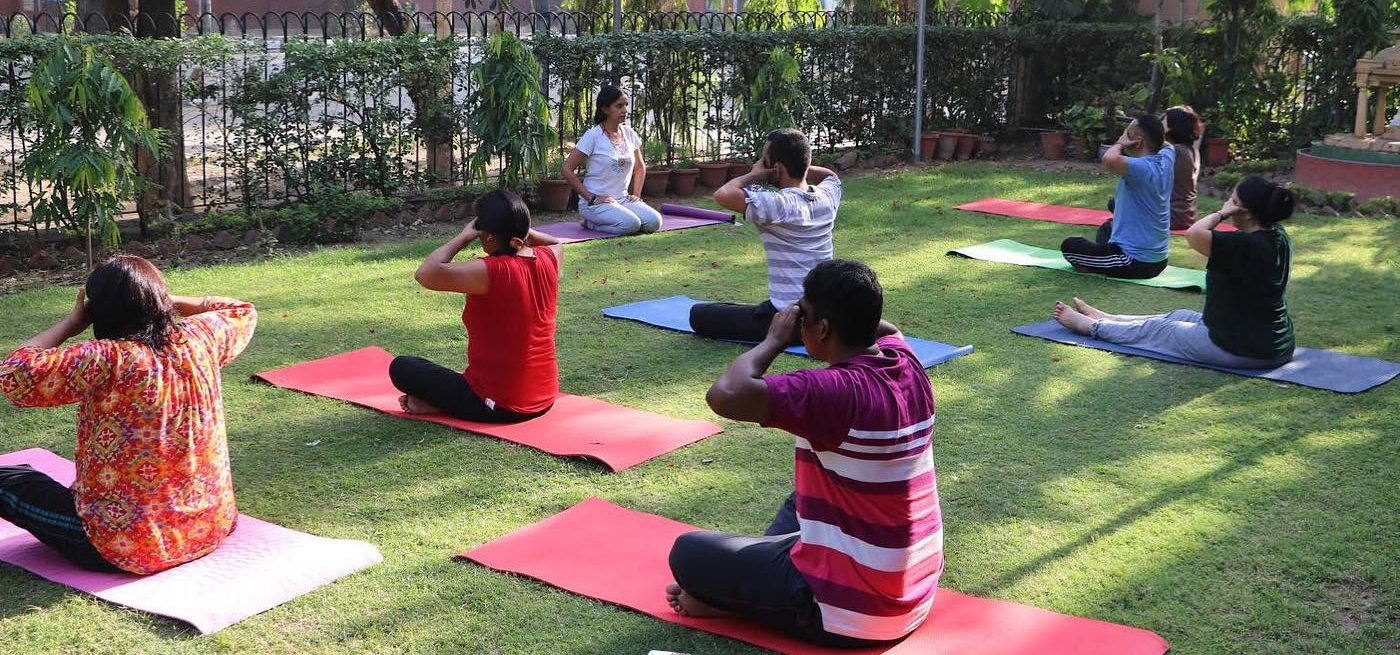
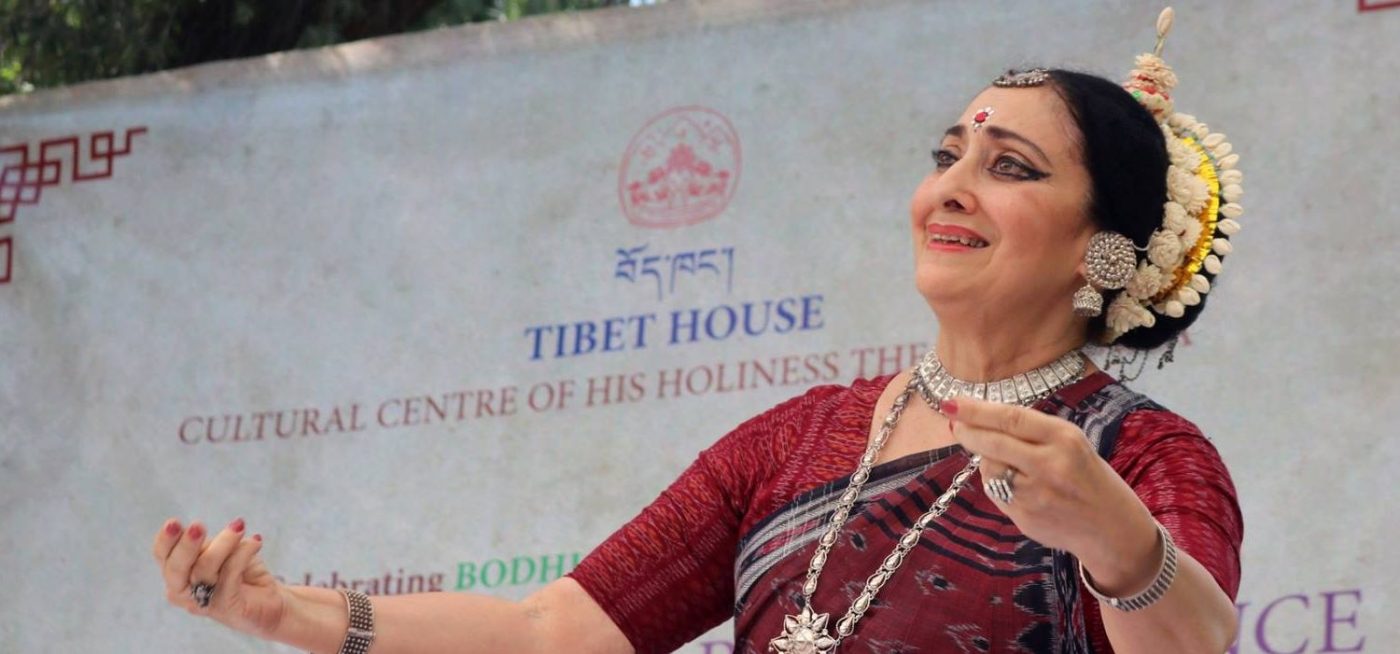
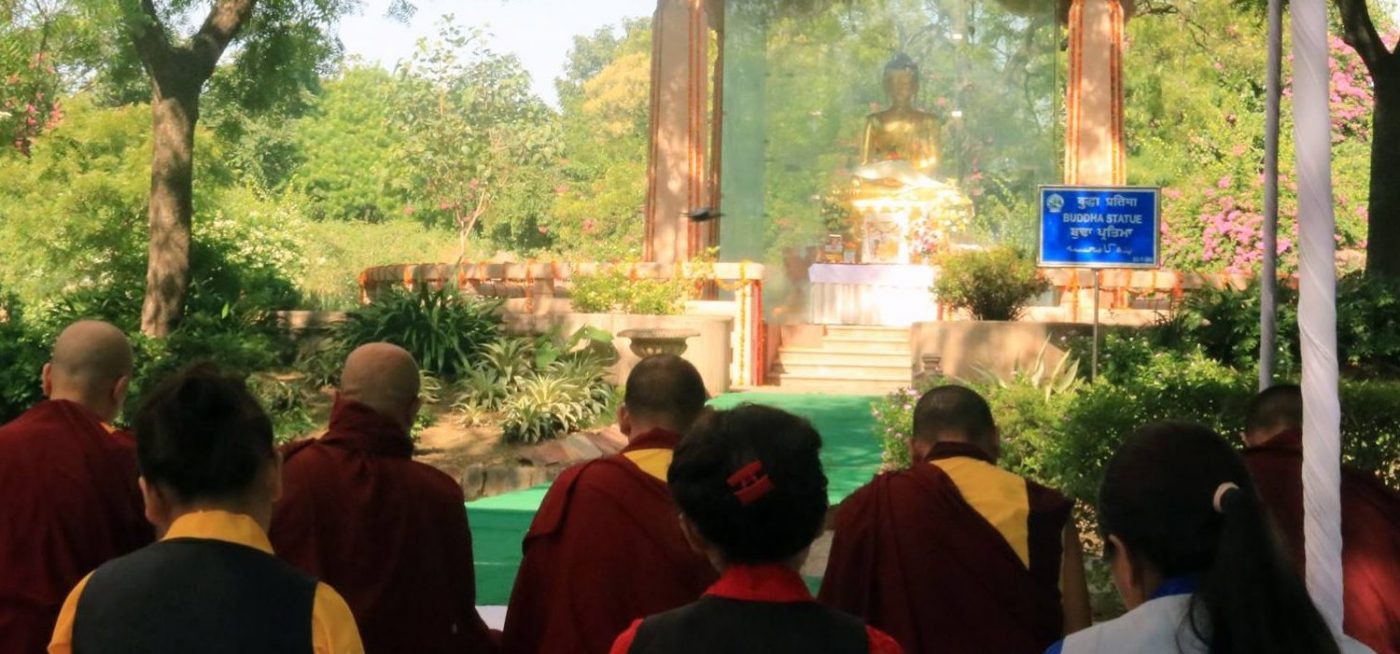
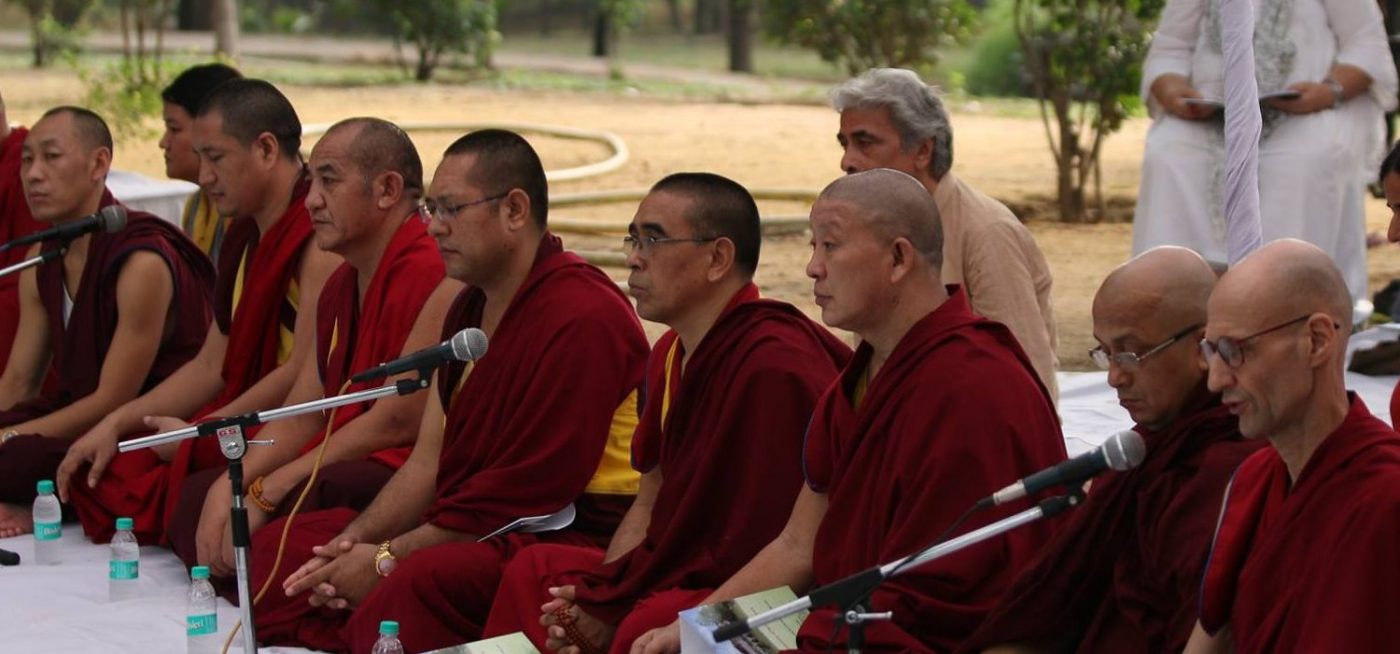






Programme Detail Links
International Festival of Buddhist Music and Ritual
We are delighted to have been able to put together an International Festival of Buddhist Music and Ritual from October 8-10, 2006 to commemorate the 2,550th year of the Mahaparinirvana of Sakyamuni Buddha. This festival is being organized in collaboration with the Ministry of Culture, Government of India, and the India Habitat Centre. On this auspicious occasion, we remember the historic event of the installation and presentation of the Buddha Statue to the government and people of India by His Holiness the Dalai Lama in 1993, as a symbol of gratitude for their sustained effort in promoting the cause of world peace and understanding. This statue, installed at the Buddha Jayanti Park in New Delhi, stands as a constant reminder of the Path to Universal Peace and Enduring Happiness taught by Sakyamuni Buddha. From India where Buddhism was born, the Dharma traveled from land to land, language to language, and several developments in the form of art and culture took place during its long history of 2,550 years. With the International Festival of Buddhist Music and Ritual, we present some of these rich artistic accomplishments from the Buddhist cultures of Sri Lanka, Japan, Korea, Thailand, Nepal, Mongolia, Vietnam, and Tibet. Tibet House is grateful to the Government of India for their collaboration on this grand event. We are indebted to the India Habitat Centre, the National Museum and Elinore Detiger from Scotland for their generous support. We also thank all the monasteries, establishments and individuals for their contribution in the preparations that involved numerous co-ordination and work details. Our gratitude also goes to all the participants from different countries that have taken a keen interest in the festival. We would like to record our deep gratitude for the presence and discourse of His International Festival of Buddhist Music and Ritual. |
Lama Doboom Tulku |
Former Director |
THE GOLDEN PROCESSION |
Once upon a time, in Tibet, the capital city of Lhasa would come alive twice a year to celebrate two major Buddhist festivals: the Monlam Chenmo or great prayer festival and the Tshokcho with Sedreng (Golden Procession). Pilgrims would come from all over the country to attend the festivals which combined religious practice with entertainment, two aspects of Tibetan culture that have not failed to rise interest wherever such events have been recreated around the world. Tibet House, in its endeavour to introduce Indian audiences to authentic Tibetan culture and traditions, had organized in the year 199 a mini Monlam Chenmo festival where customary prayers were conducted at Buddha Jayanti Park and a traditional invocation to H.H. the Dalai Lama was performed by the Chant Master of Drepung Monastery who walked at slow pace on a ramp while intoning the invocation in the typical deep overtone style. It was a grand event, graced not only by H.H. the 14th Dalai Lama but also by the former President of India, Shri R. Venkataraman. This year Tibet House will honour the 2550th anniversary of Buddha’s Mahaparinirvana with a major cultural event, an International Festival of Buddhist Chanting and Ritual, which will last for three days and will see the participation of groups from most Buddhist countries. The Festival will be inaugurated on 8th October 2006 by HH the Dalai Lama at Buddha Jayanti Park – also marking 13 years of the installation of the Buddha Statue at the park. On this occasion Tibet House will recreate the atmosphere of the second great Festival, the Tshokcho, by organizing a Golden Procession. 108 monks and nuns belonging to the 4 major traditions of Tibetan Buddhism will parade at the park in their ceremonial attire, carrying each a different item of offering. Historically, the Tshokcho festival was instituted in the 17th Century by Sangye Gyatso, the Regent of the Fifth Dalai Lama, in commemoration of a vision seen by the Great Fifth. The Golden Procession would encircle the Potala Palace like a giant golden rosary while H.H. the Dalai Lama would watch the event from his quarters up high in the palace. In concomitance with the procession, a large Thangka was displayed over the wall of the Potala Palace. The sacred objects that would be carried in the processions were housed in the Treasure Room of the Jokhang, the main holy Shrine in Lhasa and they were taken out for the Golden Procession once a year. The evening before the event, the sacred items were taken out in the presence of representatives of the Dalai Lama, the Kashag (Council of Minister) and the Treasurers were guarded overnight. The monks assembled at the Jokhang at dawn and as the first ray of the sun lit up the summit of the Gephelri mountain the procession would set round the Barkor (inner circuit), then proceed south towards the Lingkor (outer circuit) and finally across the Turquoise Bridge leading to the Potala Palace. The procession would be led by a Master of Ceremony carrying incense, while the following monks would hold holy objects such as images and offering objects such as mandalas, musical instruments, banners and many more. As soon as the procession reached the stone pillar in front of the Potala, the enormous Goeku – a silk appliqué Thangka of 75 by 40 feet – would be hauled up the Potala walls. Then the festival proper began, which included chanting, music and sacred dances – including the strenuous “8 drum dance” – being performed in the courtyard. Later the procession set out again on its course, this time joined by His Holiness’ elephant, and winded its way around the Potala – halting at several points to either rest or perform – to finally return to the Jokhang where the offering items would be handed over to the Treasurer and kept safely till the next year. At the Buddha Jayanti Park, the event will closely follow the brief of the traditional festival, though with some variations dictated by location and changing times. Whereas the original event would have hundreds of monks from the Monasteries in and around Lhasa, in its modern avatar the procession will have 100 monks and 8 nuns. The 100 monks in 4 groups of 25 each will represent monasteries from the 4 major traditions of Tibetan Buddhism: for the Nyingma tradition Mindrolling monastery from Dehradun, Uttaranchal; for the Kagyu tradition Khampagar monastery from Tashi Jong, Himachal; for the Sakya tradition, Gongkar Choede monastery from Dehradun, Uttaranchal; for the Geluk tradition the Tsechokling monastery from Dharamsala, Himachal. 8 nuns from the Shugsep nunnery, Dharamsala, will join the monks. Besides the total 108 monastics forming the Golden Procession, each monastery will have 4 monks on stage who will intone the background chanting during the event. A monk carrying a banner, each representing wisdom Buddhas and their respective wisdom qualities, will lead each group. The other monks will carry different offerings. 1. The Nyngma contingent will be led by a monk carrying a white banner, symbol of auspiciousness and of the Buddha Vairochana. The rest of the group will carry auspicious symbols and banners of different shapes and colours. 2. The Kagyu group will open with a yellow banner, representing Buddha Ratnasambhava and his enriching quality. This group’s main offering items are musical instruments, mainly wind instruments such as conch shells, trumpets, shehnai etc. 3. The Sakya monks will be the bearers of the red banner, colour of Buddha Amitabha and his power of control. They will carry percussion instruments such as drums, cymbals etc. This group will also include 8 drum dancers who will perform the spectacular drum dance during the procession. 4. Last come the Geluk group, heralded by the green banner, symbol of the Buddha Amogasiddhi and the wisdom of accomplishment. The offerings carried by this group are highly symbolic and are connected to traditional rituals, in particular the Mandala Offering ceremony. First come the 7 royal attributes i.e. chakra, jewel, queen, minister, elephant, horse, and general. Then the 4 offerings representing the 4 Dvipa lands: the precious mountain, the wish-fulfilling tree, the wish-fulfilling cow and the uncultivated crop. These are followed by the traditional offerings of the 16 Arhats such as monastic robes, sitting mats, vase, begging bowl, monk’s staff etc. The Geluk contingent will close with 4 monks carrying Thangkas depicting the 4 Lokapalas, or Guardian kings of the world. 5. The four groups will be followed by a fifth one, that of 8 nuns holding each a large damaru (hand drum) and bell which are used in the practice of chod. Half way through the procession, in the very middle, will be a monk carrying a white umbrella known as “Middle White Umbrella” which marks the centre of the procession. At the end of the Golden Procession, the 8 drum dancers will perform “Dance of Auspiciousness”. The recreation of the Golden Procession will be a unique occasion for the Indian public to experience the ambience and flavour of an ancient festival, its visuals, sounds and colours and the skills of highly trained performers. Once again, the memories of traditional Tibet will come alive at the Buddha Jayanti Park together, we expect, with other humbler customs, such as the undying tradition of picnic that the exiled Tibetan community still makes a point to revisit whenever given the chance of an open-air event. |
Three Days of Dharma, Dance and Delight |
A report by Swati Chopra |
To commemorate the 2,550th year of the Mahaparinirvana of Sakyamuni Buddha, Tibet House organised a three-day International Festival of Buddhist Music and Ritual in New Delhi from October 8-10. This grand event brought together monastics and artists from Buddhist cultures from around the world, in a fitting tribute to a wisdom tradition that continues to find new interpretations in modern times, its insights as relevant today as they were two and a half millennia ago. On a balmy morning that grew into a blistering noon, the Festival was inaugurated by His Holiness the Dalai Lama at the Buddha Jayanti Park in New Delhi. Earlier in the morning, regular walkers at the beautiful park were somewhat baffled by the crowds that had suddenly descended upon their secluded haven. When told it was because of an impending visit by His Holiness, most smiled in quick comprehension and some even stayed back for the event. Arrangements for the event had been made in the section of the park that is overlooked by the giant Buddha statue that was presented to the government and people of India by His Holiness the Dalai Lama in 1993. As His Holiness and representatives from various Buddhist cultures took their places for the inaugural ceremony of the International Festival of Buddhist Music and Ritual, along with an audience that comprised people of numerous nationalities, it was in the gentle presence of this Buddha statue. No other venue could have been more appropriate than this, to draw the different cultural and geographical expressions of the Buddha’s dharma into one harmonious melody. One has often heard of debates and differences of opinion between the schools and sects of Buddhism. Though they all follow the Buddha’s teachings and retain the core truths expounded by him, they are separated by differences in understanding and interpretation, practice and ritual—some doctrinal, others cultural. For instance, the Buddhism of Sri Lanka could on the surface seem far removed from the Buddhism of Tibet. At the International Festival of Buddhist Music and Ritual, they were able to sit together, hear one another, and find the common thread that draws these diverse gems into one sparkling necklace. This was in evidence right from the start at the inaugural ceremony, where not only did representatives share the same platform but also rendered sacred sutras from their own traditions and heard others do the same. The commonalities were hard to miss—there were three different renderings of the Heart Sutra in Korean, Vietnamese and Sanskrit! This intra-faith chanting began with the Tisarana in Pali led by Ven. Olande Ananda Thera from Sri Lanka and the Arya-triratna-anusmriti-sutram in Sanskrit by Prof. G.C. Tripathi and his group. This included the taking of refuge in the Three Gems—Buddha, Dharma, Sangha—with the triple repetition each of: ‘Buddham saranam gacchami; Dhammam saranam gacchami; Sangham saranam gacchami’. [‘I seek refuge in the Buddha; I seek refuge in the Dharma;I seek refuge in the Sangha.’] In this simple yet profound way, the Sakyamuni Buddha invited people into his sangha of seekers on the path of wisdom. Its chanting at the inaugural ceremony evoked ancient resonances and oriented the listeners towards a deep, quiet space from which to experience the sacredness of the event. As the sonorous chanting of Tibetan monks arose, a rare phenomenon began to unfold before the audience. This was the famed ‘Golden Procession’, called ‘Tshokcho’, which had once been one of the two major Buddhist festivals celebrated in Lhasa, the other being Monlam Chenmo or the prayer festival. Instituted in the 17th century at the time of the Fifth Dalai Lama, the Golden Procession included monks and nuns from all four major schools of Tibetan Buddhism—Gelug, Kagyu, Sakya and Nyingma. They would encircle the Potala Palace like a giant rosary as the Dalai Lama watched from his rooms high up in the Palace. Now recreated at the Buddha Jayanti Park, the Golden Procession included 25 monks each from the four schools of Tibetan Buddhism, and eight nuns from Shugsep Nunnery in Dharamsala, making 108 in all. Though the scale and time of the procession were curbed due to obvious constraints, the emotion of sacred celebration was retained and felt by both participants and members of the audience. The procession progressed amidst chanting, and was led by the Master of Ceremonies carrying incense, followed by contingents of monks carrying banners related to their school of Buddhism, and holy objects such as mandalas, conch shells, trumpets, other assorted musical instruments, and so on. After the spectacle and excitement of the procession, it was time to move inwards once again, in preparation for the dharma discourse to be given by His Holiness the Dalai Lama in a short while. This opportunity was provided by the chanting of the Lotus Sutra in Japanese, led by Odashi Rev. Fukuoka. The sutra’s sombre syllables, Namu-myoho-renge-kyo, that form an integral part of the spiritual practice of Nichiren Buddhism, were followed by the chanting of the Pacchima Sutta in Thai led by Ven. Mae-Chee Sansanee Sthirasuta. Then followed the Heart Sutra—in Korean led by Ven. Ma Myoung Chan (Ilun), in Vietnamese led by Ven. Vo Mong Doc Lap, and finally in Sanskrit by singer Vidya Rao. With the final words of the Heart Sutra—Gate, gate; Paragate; Parasamgate; Bodhi svaha—still reverberating in the atmosphere, His Holiness embarked upon his discourse on the Eight-fold Noble Path given by the Buddha as a way out of humankind’s suffering. [Full version of teaching is given in an accompanying article.] The morning’s programme concluded with chanting of the Tenbarma by Tibetan monks, and much gratitude in the hearts of all present for the opportunity to witness such a unique and remarkable event. This was just the beginning, and what followed were three evenings filled with dharma and delight, song and dance, and a new perspective on the cultures of Buddhism. But before, on the afternoon of October 8, His Holiness the Dalai Lama released a Tibet House publication titled Tibet House: Mission and Activities. This was accompanied by a brief talk to the participants on the ‘Importance of Inter-cultural Activities for a Deeper International Understanding’—a philosophy that underlies so much of His Holiness’ own work and that of institutions that draw their inspiration from him, such as the Tibet House. For the evening programmes of the Festival, the action shifted to the India Habitat Centre located at Lodhi Road in New Delhi. Every evening, this bustling hub of cultural activities was transformed into an oasis of spiritual ritual and chanting, its auditorium, lawns and corridors speckled with colours of monastic robes from around the Buddhist world—Tibetan maroon-yellow, Sri Lankan ochre, Korean grey blue, Thai white, among others. The first evening began with chanting from the Theravadin tradition of Sri Lanka. Rendered in Pali, the original language of the Buddha’s teachings and discourses, it was led by Ven. Olande Ananda Thera. Ven. Ananda was born in the Netherlands and received ordination in 1975. He is now the resident teacher at the Pagoda Meditation Centre in Nugegoda in Sri Lanka. His presence served to remind one of the surge in interest in the Buddha’s dharma in recent times, particularly in countries in the West where it is emerging as a viable alternative for those on the spiritual quest. After this auspicious beginning, Tibetan monks from the Gongkar Choede monastery, now established in Dehradun in Uttaranchal, presented the famous ‘drum dance’ of their tradition. Performed with large drums, the dance created an atmosphere of rhythm and harmony, thus suggesting a resonance of the perfect balance that is believed to lie at the very heart of nature, and forms one of the meanings of ‘dharma’ in the sense of eternal, natural order. This contemplative mood was deepened by the chanting in Japanese by a group of Honmon Butsuryu Shu (HBS) monks, which followed the Tibetan drum dance. The HBS follows the teachings of Nichiren Shonin, a Buddhist master who lived 750 years ago, which centre on the Lotus Sutra. HBS was founded some 150 years ago by Priest Seifu Nagamatsu. Its delegation to the Festival was led by Rev. Nisso R. Fukuoka and Rev. Seijun Nagamatsu—both high-ranking priests in the HBS hierarchy. Chanting is one of the main practices of Nichiren Shonin’s path, and he believed in the power of the Odaimoku, a mantra derived from the Lotus Sutra, to weed out the impurities of human nature just as “amber attracts dust and magnet draws iron”. The finale of the first evening of the International Festival of Buddhist Music and Ritual was provided by a spectacular performance by the Korean monks of the Yeongsanjae—a traditional monastic opera from Korea. The Yeongsanjae is a dramatisation of the delivery of the Lotus Sutra by the Buddha Sakyamuni on the Mount Grdhrakuta, and its performance included sutra chanting, ritual dance, and a musical ensemble. Though traditionally the Yeongsanjae would take three days to perform, its duration had been considerably scaled down here. Nevertheless, the chanting and ritual dance as well as the visual grandeur of the opera conveyed an interesting and original interpretation of an event that occurred more than 2,550 years ago in India—another reminder of the many lands, languages and peoples the Buddha’s dharma has travelled in the intervening centuries since his time. The first day of this unique cultural and religious festival had whetted one’s appetite for more, and piqued the curiosity of the audience for the performances and rituals that were to follow on the remaining two days. The second day’s programme commenced with a very special presentation—that of the Chod ritual by nuns of the Shugsep Nunnery, Dharamsala. Chod is an ego-severing rite that was evolved by a great yogini of Tibet—Ma-chik-lab-dron—in the 11th century. Since then, its main practitioners have been women. Chod was traditionally practised in cemeteries and other isolated places, and consisted of visualising offering the practitioner’s body to deities, dakinis, or spirits, for the benefit of all sentient beings. The highest level of Chod practice involved the stage where it became possible for the practitioner to actually cut off her ego. Since Chod is mostly practised in isolation, its presentation at the International Festival of Buddhist Music and Ritual was definitely a rarity. One did feel somewhat uncomfortable witnessing a highly evolved spiritual practice being ‘performed’ as it were on a stage, but this discomfort was short-lived. The Shugsep nuns sat in a semi-circle on the stage, and conducted the ritual with great dignity and poise. It was almost as if the ‘audience’ didn’t exist, as they began their chanting and clacked their bright aquamarine blue damarus (hand drums) in their right hands and sounded small bells with their left. Chanting was punctuated with short blows by a nun into the kangling, a reed instrument that is used to ward away negative influences and evil spirits. In Chod, the damaru and bell represent method and wisdom that must conjoin on the path to nirvana. The short, sombre and deep Chod was followed by the Carya Dance from Nepal, said to be a form of ‘meditation in action’. Traditionally these were performed at Tantric Buddhist ceremonies to verses composed by great yogis of India and Nepal. The presentations were made by performers dressed in the elemental colours of blue, green, yellow, white and orange, and consisted of the Dance of Five Transcendental Buddha, the Dance of Manjusri, that of Vajrayogini, and the Sixteen Lasya Deities of Offering. In a heightened state of visualisation, it is believed that the Carya dancer imbibes the qualities of the deities he is representing through dance—the dancer not only becomes the dance, but in a transcendental moment, becomes the deity as well. It is a spiritually powerful premise because of the bridge it creates between what is essentially an artistic activity and an experience of embodiment that transports one beyond one’s ordinary self, thus fulfilling the highest transcendental purpose of art. Though one is not sure whether these particular dancers achieved that quality of transcendence, it was an interesting performance nevertheless. There was nothing meditative or quiet about the next event—Kandyan dance from Sri Lanka led by Y.G. Rupathunga. This was perhaps the most joyous and spontaneously robust performances one has ever seen, and quite understandably swept the audience off its feet. Viewers’ hands couldn’t stop clapping as the dancers leaped in air with abandon, danced to a hypnotic drumbeat, turned non-stop cartwheels, and exhibited skilled proficiency at jugglery. Clad in crisp white, their torsos and foreheads flashing silver, the dancers performed beautiful animal movements and abstract impersonations. One wonders whether this could be referred to as a ‘Buddhist’ dance form in terms of content or whether it is more a cultural expression, but it certainly did wonders in terms of the false impression held by many associating Buddhism with a certain grimness and joylessness associated with a wrongful interpretation of the First Noble Truth. There was certainly a lot of joy going around the India Habitat Centre that evening as the Kandyan dancers lit up the sky with their joie de vivre! As the wheel turns and comes full circle, so did this second evening with two performances that re-ignited the earlier mood of calm contemplation invoked at the beginning by the Chod. The Thai classical dance began with an invocation by nuns, and moved on to a presentation that symbolised the close association the Buddha dharma has with daily life in Thailand. It comprised a scene where a mother explains the significance of the Three Gems of Buddhism to her son, and points out how these can protect one from negative and harmful actions. The enactment was gentle in spirit and convincingly portrayed the tender bond of love between mother and child. The fact that it was performed by a real-life mother and son duo added to the sweetness of the performance. This was followed by Mongolian devotional songs rendered by Darjaa Sarangua, a renowned singer from Mongolia. The third day marked the Grand Finale of the Festival, with most of the performers giving shortened versions of their presentations. These included the Korean, Sri Lankan, Mongolian, Thai and Carya performances. Though the Tibetan element was missing, it was still a great opportunity for those who couldn’t attend the earlier evening programmes to get a glimpse of the rich fare gathered by Tibet House for this truly amazing Festival. In hindsight, the true value of such a festival cannot be over-emphasised. Not only did it showcase the richness and variety of culture and ritual in the Buddhist countries of Asia which was an apt commemoration of this the 2,550th year of the Sakyamuni Buddha’s Mahaparinirvana, it also fostered the seeds of intra-faith understanding. Just as inter-faith dialogue between religions and faiths is the need of the hour, so is intra-faith dialogue, particularly in a wisdom tradition as variegated as Buddhism. There perhaps can be no ‘one’ or ‘original’ Buddhism because wherever it exists now it does so in interpretation, accultured to various climes and languages, customs and traditions, an immigrant religion that long ago disappeared from the country of its birth. I am sure just as viewers received a taste of the variety that is inherent in Buddhism today at the International Festival of Buddhist Music and Ritual, so must the participants. In this sense, the Festival bridged a gap in the worldwide Buddhist sangha—it brought some parts of it together and made them aware of their commonality, as also their diversity. In doing this, Tibet House has begun an important dialogue that must now continue in different ways, through different mediums and at different forums. |

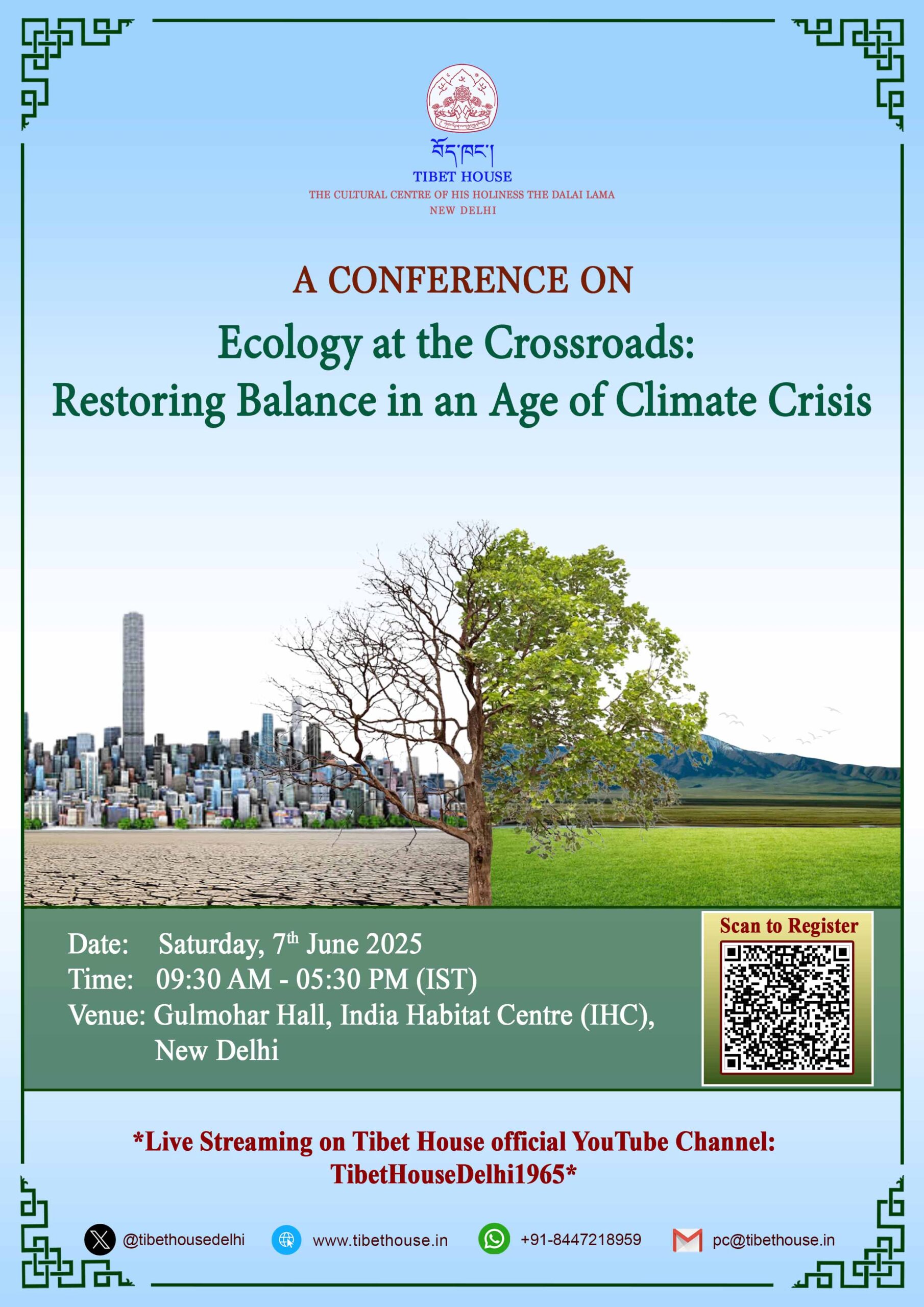
 Date: Saturday, 7th June 2025
Date: Saturday, 7th June 2025 Time: 9:30 AM – 5:30 PM
Time: 9:30 AM – 5:30 PM Venue: Gulmohar Hall, India Habitat Centre, New Delhi
Venue: Gulmohar Hall, India Habitat Centre, New Delhi
